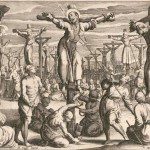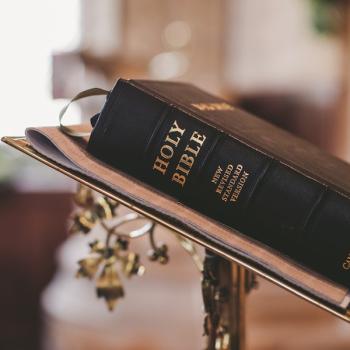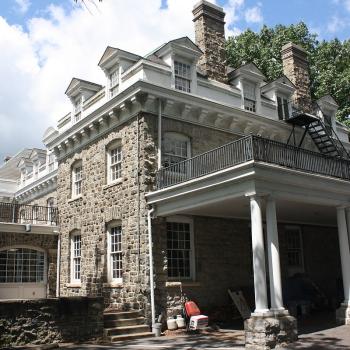To give a concrete example: I am currently practicing as a Ruthenian Catholic. My Church is of the Byzantine Rite, but for a variety of historical reasons is an independent, sui iuris Church, based in Pittsburgh, Pennsylvania, under the guidance of Metropolitan William Skurla, and in union with the Bishop of Rome. Justin Tse, another blogger here, is a Ukrainian Greek Catholic, whose Church is also of the Byzantine Rite, but which is headed by Major Archbishop Sviatoslav Shevchuk in Kiev, Ukraine. In other words, we share a rite, that is, a set of traditions, but our Churches are not the same and, in fact, have totally distinct hierarchies.
Things can get a little confusing, however. Here in America, you’ll often hear people call themselves “Byzantines” or “Byzantine Catholics.” Typically, they mean “Ruthenian,” since the Ruthenian Church has begun calling itself the “Byzantine Catholic Church in America.” Lots of people whose Churches share the Ruthenians’ Byzantine patrimony (like the Melkites, the Ukrainians, the Romanians, etc.) take offense to this totalizing claim on the term “Byzantine.” My advice to outsiders would be to call the individual by his or her Church’s particular name, i.e. Justin is a “Ukrainian,” I am a “Ruthenian,” and so on (though, of course, different people ask for different things: Justin calls himself an “Eastern Catholic Guy.” Others prefer what is now generally considered an old term: “Greek Catholic,” meaning “Catholic of the Greek [Byzantine] Rite”).
Relatedly, this is why it’s often not best to merely call people “Eastern Catholic.” It’s true; we are Eastern Catholics, but we also belong to particular rites, and within those rites, particular Churches. Syriac Catholics, who use the West Syriac Rite, are Eastern Catholics as much as Syro-Malabars, who use the East Syriac Rite, who are Easterners as much as Ethiopian Catholics, who use the Alexandrian Rite (and then the Ge’ez Sub-Rite within that rite—it’s complicated!). But as you can see, the differences that separate our individual rites, let alone our individual Churches, are meaningful. For ease of convenience, then, we can be “Eastern Catholics,” but in order to feel truly respected, most prefer that outsiders try to learn about their particular patrimony in all its particular loveliness.
As you can see, that’s the hard (and wonderful) thing about this topic: Eastern Catholics are really diverse. Most would say it’s offensive to call them “Roman Catholics” (since they don’t use the Roman Rite). Some, however, are fine with the term. Some Byzantine-Rite Easterners prefer to be called “Orthodox in Communion with Rome” above all, since their traditions are effectively those of the Eastern Orthodox (since the Eastern Orthodox are also, generally, of the Byzantine Rite!), simply while in union with the Bishop of Rome.
There’s no need to worry, however. Eastern Catholics are, in my experience, a welcoming bunch. The effort to try to learn which terms best describe our individual traditions will not go unappreciated. Head down to a Byzantine-Rite “Divine Liturgy” (not a “Mass”) and learn the best way anyone can: through interaction with the rich traditions of the East. Keep in mind that your eastern brethren are as integral a part of the Catholic Church as the Latin West, and, though smaller, may be the greatest hope there is for reunion with our separated, Apostolic brethren.
Since, it’s still Christmas, then, I’ll leave you with a hearty Christos Razdajetsja! Christ is born!
You may find more information about the Eastern Catholic Churches in the following links:
https://www.youtube.com/watch?v=sT0m9N_Kkmg&t=2s
https://www.youtube.com/watch?v=Y6x0iy-7Dd4
https://www.youtube.com/watch?v=yZ79RTAT_zY
https://www.youtube.com/watch?v=HLEM749xU78













